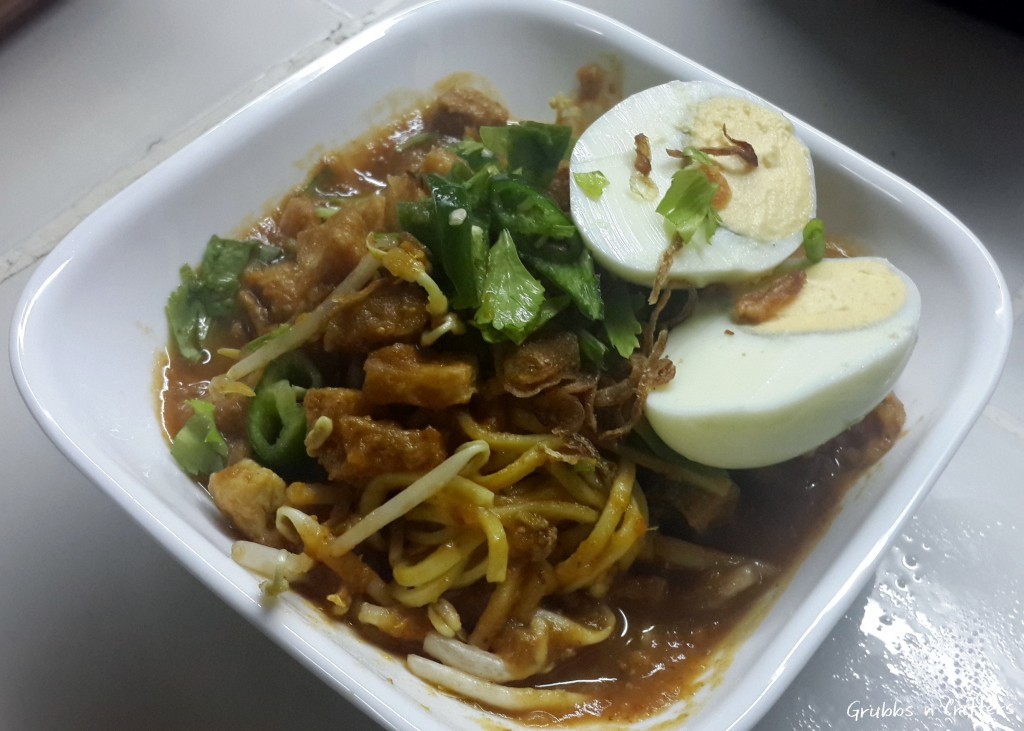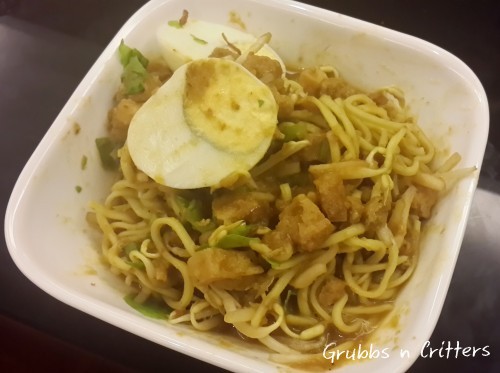
August 26, 2014
A taste of Home: A Singaporean’s Rendition of Mee Rebus
The Malay word “Mee Rebus” is literally translated as boiled noodles in English, but it is hardly just any noodles as the name suggests.
It actually is a dish comprising of yellow egg noodles submerged in thick, hearty, savoury and sometimes spicy gravy. It is then garnished with boiled eggs, fried tofu, taugeh (bean sprouts), fresh spring onions and cilantros as well as a handful of sliced up fresh green chillies. The dish goes well with fried chicken and bergedils, too!
The dish is quite popular in Singapore and Malaysia and from memory, Mee Rebus is often associated as a breakfast dish more than anything else. In fact, my dad is a big fan of Mee Rebus and I remember that he just could not get enough of it.
Growing up, I always thought that the dish is a bit too heavy for breakfast consumption. I would rather consider it for lunch and never actually have such a big affinity to it. That being said, I often wondered what the fuss was all about and did not really develop a liking to it till I started working – mainly because it usually is quite a cheap dish and as a first-jobber, I don’t have much money for other types of food!
Recipes for Mee Rebus varies – some use dried shrimps, some use potatoes or sweet potatoes and some add peanuts to their gravy. I have been making Mee Rebus for several years now and have adapted several recipes without the use of shrimps. My original modified version of Mee Rebus recipe can be found here within my site.
This time round though, I decided to experiment with the gravy by using a combination of candle nut, roasted grounded peanuts AND fermented soya beans (otherwise known as taucho).
Outcome: Richer taste and fuller body. So satisfying and filling that we don’t need second helping. The essence of comfort food.
Here’s a Singaporean’s rendition of home-made Mee Rebus:


- 150-300g fresh yellow egg or chowmein noodles
- 150g beef, thinly sliced into small pieces and boiled
- 6 cups beef stock used from the boiled beef
- 1 non-MSG beef stock cube
- 3 tbsp Vegetable oil
- 1 Candlenuts
- 2-3 tablespoon of roasted, grounded peanuts
- 1 cup of fermented soya beans (rinsed and blended separately)
- 3-4 tbsp Chili paste (blended from dried chillies)
- 1 tbsp Coriander powder
- 1/2 inch turmeric root
- 1 inch fresh galangal
- 20 Shallots or 4 mid-sized red onions
- 2-4 Small sweet potatoes, peeled, cooked and mashed
- Salt to taste
- • Fried shallots
- • Pre-fried tofu or soy bean cakes, cut into small cubes
- • Bean sprouts, briefly blanched
- • Hard boiled eggs, cut in wedges
- • 3-4 limau kasturi (lime), cut into halves
- • Fresh green chillies, thinly sliced
- Boil beef separately till tender and drain the liquid from the beef to use it as stock. Set aside both boiled beef and broth
- Grind candlenuts and peanuts, chili paste, turmeric root, shallots, galangal and coriander powder into a fine paste.
- Heat pot on medium flame, add vegetable oil.
- Cook paste until quite toasted.
- Add in the rinsed and blended fermented soya beans. Mix them thoroughly
- Add in the boiled beef earlier and mix in thoroughly
- Add some of the beef stock liquid and cube, bring it to a boil.
- Slowly add the mashed sweet potato to the stock, till a gravy-like consistency is reached.
- Add salt to taste , decrease the heat to low, simmer gently 8 to10 minutes
- Add more mashed sweet potato if gravy is too thin or more beef stock if the gravy is too thick
- Keep gravy hot on the low-medium heat, for serving.
- Take another pot and boil some water. This is used for blanching (dipping) bean sprouts and warming up noodles.
- When ready to serve, blanch a handful of bean sprouts with some noodles in a sieve into the hot boiling water
- Place them in a dish and ladle over the piping warm gravy over noodles.
- Top with a little of each garnishing.
Get ready to eat. And this is what you get when you start mixing them all in!

